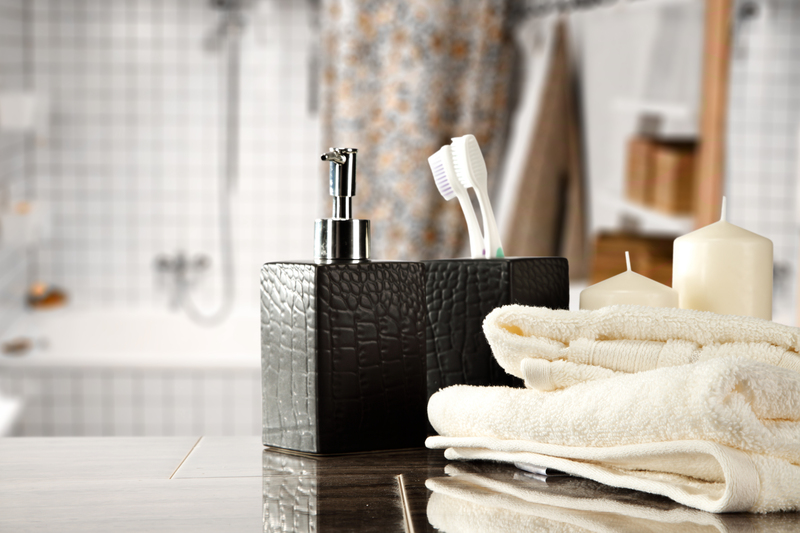Maximizing Space When Moving Your Mattress and Bed
Moving your home is an exciting yet challenging adventure, especially when it comes to transporting large furniture and sleeping arrangements. Maximizing space when moving your mattress and bed not only saves you time and money, but also ensures your items reach your new home safely and efficiently. In this guide, you'll discover how to make the most of every square foot during your move and keep your valuable sleeping gear in top condition.

Why Space Optimization Matters When Moving Beds and Mattresses
When relocating, every inch of moving truck space counts. Mattresses and bed frames are among the bulkiest items in your home. Efficiently packing and utilizing space brings several advantages:
- Cost-saving: More efficient use of a moving truck means smaller truck sizes or fewer trips, leading to reduced moving costs.
- Prevents Damage: Properly secured mattresses and bed parts are less likely to get dirty or damaged during transit.
- Simplifies Unloading: Optimized packing allows for easier, more organized unpacking at your destination.
Understanding Mattress Types and Their Moving Needs
Before you start, identify the kind of mattress you own--memory foam, innerspring, latex, or hybrid--as each type has unique needs for protection and handling. Bed frames, from minimalistic platforms to elaborate four-posters, each present different challenges for moving.
- Memory Foam Mattresses: Flexible but heavy, need strong support and careful folding (if allowed by manufacturer guidelines).
- Innerspring Mattresses: Hold their shape; avoid bending to protect the internal coils.
- Hybrid & Latex: Can be heavy and not always flexible; require strong support and protection from sharp bends.
- Bed Frames: Disassembling is almost always recommended for maximizing truck space.
Pre-Move Preparation: Cleaning, Disassembly, and Packing
1. Clean & Prepare Your Mattress and Bed
Start by thoroughly cleaning your mattress and bed parts before moving. Vacuum the mattress, wipe down the frame, and allow both to air out. This prevents you from bringing hidden dust, pests, or allergens into your new home.
2. Disassemble Bed Frames
Take apart your bed frame to minimize its footprint. Use these steps:
- Strip the bed of all bedding and pillows.
- Remove the mattress and box spring.
- With the right tools (Allen key, screwdriver, or wrench), carefully unscrew and separate headboard, footboard, side rails, and support slats.
- Label each part and keep all nuts, bolts, and screws in a clearly marked, sealable bag taped to a large bed component.
Disassembling drastically maximizes the available space in your moving truck or vehicle and prevents accidental damage.
3. Use Mattress Bags and Bed Wraps
Mattress bags are essential for keeping your mattress clean and protected from dirt, moisture, and pests. Use plastic mattress covers or heavy-duty moving bags, especially if your mattress will be transported in an open vehicle or during uncertain weather.
- Choose a bag that fits your mattress size (Twin, Full, Queen, King, California King).
- Seal the bag tightly using packing tape to secure all openings.
Smart Packing Techniques for Your Bed and Mattress
Proper Positioning in the Moving Vehicle
The way you load the mattress and bed frame segments affects how much you can fit overall. Making intelligent use of vertical and horizontal space is key.
- Mattress placement: Stand the mattress on its side (long edge down) against a wall of the truck for maximum efficiency. This leaves floor space free for other boxed items.
- If upright space is limited (like in vans or SUVs), lay the mattress flat, ideally on top of packed, sturdy items.
- Never put heavy objects on top of your mattress - it can damage springs, memory foam, and fabric.
- Lay bed slats flat and slide rails alongside truck walls, or stack them tightly with other long flat items.
Organizing Other Moving Items to Save Space
When maximizing truck space during your mattress and bed move, consider the following:
- Pack your boxed bedding, pillows, and linens inside dresser drawers or large storage bins.
- Slide smaller bed parts (like slats, side rails, hardware bags) under the bottom row of boxes to fill unused gaps.
- Use the mattress as a soft barrier between fragile furniture and hard, heavy boxes.
Advanced Tips for Space Optimization and Efficient Moving
Foldable and Rollable Mattresses: Save More Space
Certain mattress types can be temporarily folded or rolled to further reduce their space requirements.
- Check your manufacturer's instructions: Not all mattresses can be compressed without permanent damage, especially innerspring and some hybrids.
- For memory foam and latex mattresses, carefully fold or roll (with the sleeping surface facing inside) and use ratchet straps to hold the form. Revert to normal shape promptly after transit.
- Use professional mattress compression bags if available.
Rolling or folding your mattress can dramatically maximize space when you're moving the bed in smaller vehicles or sharing truck space with bulky furniture.
Leverage Under-Mattress and Inside-Frame Storage
Make the most of bed components with hidden storage:
- Stash rolled sheets, towels, or extra bedding inside the fabric dust cover of some platform beds.
- Securely pack soft items inside under-bed drawers (if your bed includes them).
- Use headboard shelving or storage cavities for non-fragile, lightweight items.
Mix and Match: Using Mattresses as Protective Padding
Your mattress's plush construction can double as extra padding for fragile pieces:
- Stand the mattress between two large furniture items to prevent scratches and absorb impact during sudden stops.
- Slide mirrors or glass tabletops against a well-wrapped mattress for built-in cushioning (always wrap these items individually first).
Wall Mounts and Bed Hardware: Don't Waste a Single Inch!
Small but important elements such as bed hardware, mounting kits, and wall brackets can easily get lost--and take up more space if packed inefficiently.
- Bag and label each hardware set separately for each furniture piece.
- Use sealable bags and tape them to the largest bed component or frame panel to keep everything together and prevent digging through boxes at your new address.
Alternative Transport Solutions for Extra-Large Mattresses and Bed Frames
Moving King Size or California King Beds
Larger beds present additional space and handling challenges:
- Split box springs or two-part bed frames, if available, can be positioned more creatively for space savings.
- Disassemble any removable legs or wheels from frames to reduce bulk.
- Consider transporters or moving companies that offer specialized mattress bags and truck layouts for oversized sleeping gear.
Professional Movers vs. DIY: Which Maximizes Space Best?
Professional moving companies often have space-maximizing techniques and special equipment such as mattress carriers, flatbed carts, and custom-fit tie-downs. However, a savvy DIY mover can achieve similar results with thoughtful preparation and careful loading.
- Compare moving truck sizes, payment by volume, and whether extra stops (for multiple beds) incur additional costs.
- Ask about packing materials included and whether professional wrapping and strapping are offered.
- Check insurance for damage to your mattress or frame during transit (especially for luxury or specialty bedding).
Protecting Your Mattress and Bed Frame from Damage
Use Proper Padding and Barrier Materials
Utilize packing blankets, foam wraps, or bubble wrap to shield delicate finishes and prevent tears. Use thick cardboard in between bed parts to avoid abrasion. Even minor scratches can reduce the aesthetic and functional life of your bed frame.
Watch Out for Moisture and Pests
When moving in humid, rainy, or hot climates, moisture can become a hidden danger. Always make sure mattresses and cushions are sealed in waterproof covers. Let everything air out immediately after the move.
Don't Drag -- Carry with Care
Dragging a mattress or heavy bed components can damage both your furniture and floors. Use furniture sliders or team lifts to handle awkward sizes with care and precision, maximizing efficiency and safety.

FAQs: Maximizing Space for Mattress and Bed Moves
- Can mattresses be stored upright long-term? No – only keep a mattress on its side for the duration of your move. Long-term vertical storage can distort its internal structure, especially for memory foam or hybrids.
- Should I try to fold my mattress? Only fold memory foam or latex mattresses if allowed by your manufacturer and no other option is available. Never fold innersprings as it can cause irreparable damage.
- What is the best time to move a mattress for space efficiency? Early in the loading process! Position the mattress and largest frame components first. Fill the remaining space with boxes and small furniture.
- How much space does a king mattress take up in a truck? Flat, a king mattress is approximately 6.5 ft x 6.5 ft (42.25 sq feet). Upright, it's much less--but check the truck's height first!
Final Thoughts: Move Smart, Sleep Easy
Maximizing space when moving your bed and mattress requires thorough planning, clever packing techniques, and just a little creativity. Start by cleaning and disassembling your furniture, wrap and bag each piece, and strategically load your moving vehicle for both maximum space and item protection. Consider the unique properties of your mattress and bed frame, and be ready to use soft goods for cushioning or hidden storage. Whether you hire professionals or go the DIY route, a well-executed plan ensures you'll enjoy your bed's comfort at your new address from day one--without stress or extra cost.
With these comprehensive, step-by-step strategies, you can make the most of your next move and ensure the safe, space-saving transport of your most precious place to rest--the bed and mattress you love.



